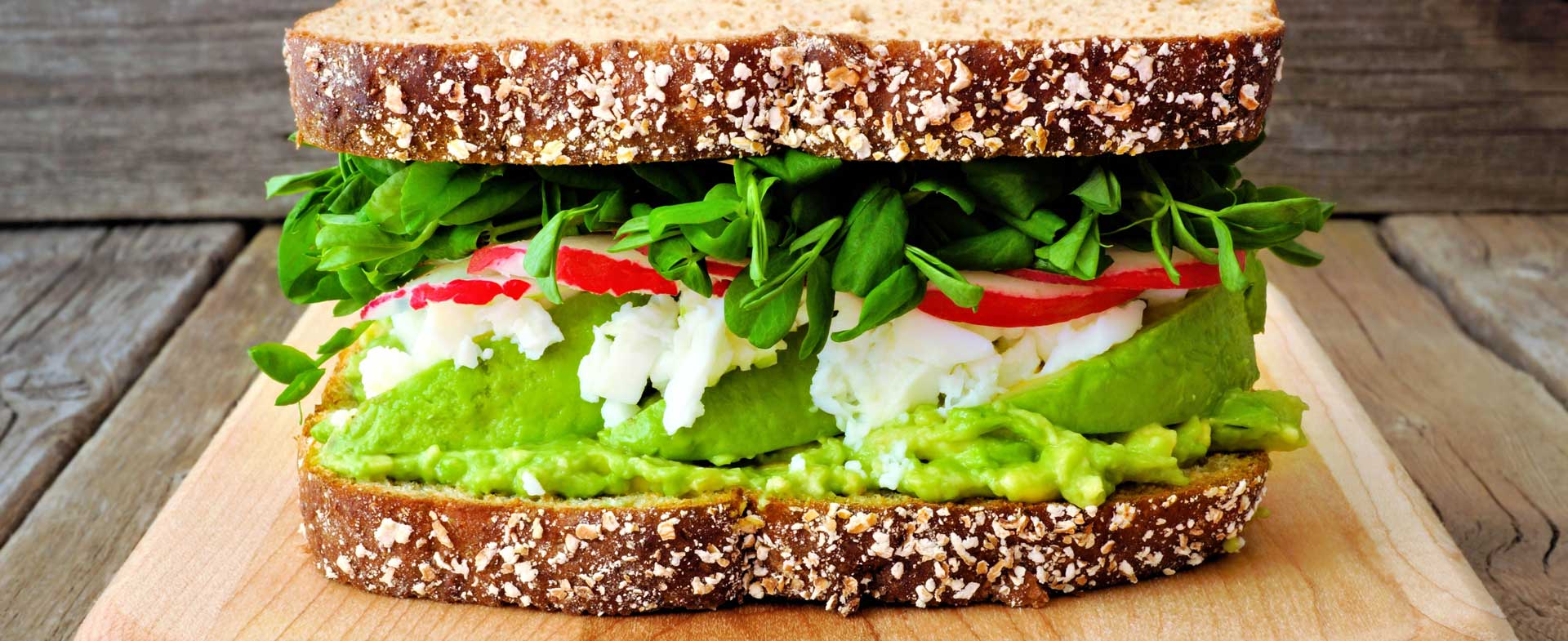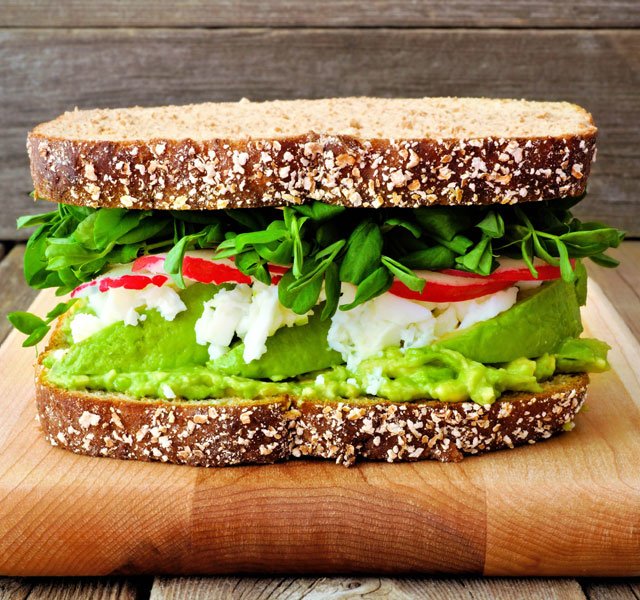Sandwiches are a staple of many Americans’ daily diets, and it’s no wonder: Throwing one together makes busy mornings easier. Plus, a sandwich is an ideal way to package a meal’s worth of nutrition into one tidy bundle. A solid sandwich packs enough punch to easily serve as breakfast, lunch, or dinner – and a half-sandwich makes a perfect snack.
“Sandwiches are convenient and they’re a seamless way to get a variety of flavors and nutrients in one bite,” explains Erin Beattie, RDN, who provides nutrition counseling through Henry Ford’s Center for Health Promotion and Disease Prevention. But while some sandwiches are stellar nutrition-wise, others can devastate a diet as soon as you sink your teeth into them. (Grilled cheese and double meat, we’re looking at you!) Some kid-approved sandwiches, for example, are often loaded with sodium and void of veggies.
So, before you bite into your next afternoon delight—or pack that school lunch—read Beattie’s 6 suggestions for better sandwich building:
- Go for whole grain. When it comes to bread, whole grain varieties always beat white bread. Whole grains contain more nutrients and fiber than enriched or refined breads, so they are healthier and keep you feeling full for longer. When shopping for whole grain products, check out the ingredients list. You want to see the word ‘whole’ within the first ingredient listed.
Quick tip: If you’re concerned about sodium and calories (both of which can be high in bread), consider serving your sandwich open-face with one slice. Or ditch the bread altogether and wrap your favorite fillings with a gigantic leafy green such as a collard green leaf instead. - Choose innovative spreads. Rather than smearing your bread with mustard, ketchup and mayo, experiment with bolder-flavored and more nutrient-rich options such as hummus, guacamole, olive tapenade, tzatziki or salsa.
Quick tip: Skip the spread altogether or opt for thinly sliced avocado and cracked black pepper instead. - Focus on healthy fillers. If your sandwich contains meat and cheese, aim for a 3-4oz portion total (meaning meat and cheese combined). 3-4oz is about the size of a standard deck of cards. Also, be sure to mix up your protein options. Nut butters, legumes (beans, peas, lentils), or tofu and tempeh are nutritious and delicious. Both tofu and tempeh are made from fermented soy beans and are sold at most grocery stores.
Quick tip: If you want a tougher texture, go for the extra firm tofu or tempeh. Tofu and tempeh absorb flavors, so you can sauté them with garlic, onion, and your favorite unsalted herbs and spices for extra zest. - Pile on the veggies. Fresh vegetables such as lettuce, tomato, peppers and cucumbers add color, crunch and texture to your sandwich – and deliver important nutrients like vitamins, minerals and antioxidants. A bonus: Most veggies are loaded with fiber. Fiber is beneficial for many reasons, including bowel regularity.
Quick tip: If you’re packing your sandwich in the morning, put veggies in a separate container or baggie and add to your sandwich at lunchtime. That way, you won’t have to bite into soggy bread. - Add seasonal extras. Eating the identical sandwich most days? Avoid the same-old by selecting seasonal extras like thinly sliced apples in the fall, mushrooms in the winter, strawberries in the spring and nectarines in the summer. That burst of flavor and texture elevates an otherwise drab dish.
Quick tip: Use fresh fruit instead of jam for peanut or almond butter sandwiches. Almond butter and sliced bananas or strawberries is a kid (and Elvis) favorite! - Pay attention to portions. Most sandwiches are loaded up with spreads and other nutrient-poor fillers. To keep your sandwich from turning into a calorie bomb, go light on the condiments and extra heavy on the veggies.
Quick tip: Slice your sandwich in half, especially if you’re purchasing your afternoon meal at a restaurant or deli where portions sizes are already over-the-top. Store the second half in the fridge and you have a ready-made meal for tomorrow.
Looking for more info and want to make an appointment with a registered dietitian? Call 1-855-434-5483 or visit Nutrition Services on henryford.com.
Erin Beattie, RDN, is a registered dietitian nutritionist with Henry Ford Health who offers one-on-one consultations through the Center for Integrative Medicine and the Center for Health Promotion & Disease Prevention, along with working in the community through Henry Ford’s Generation with Promise Program.



